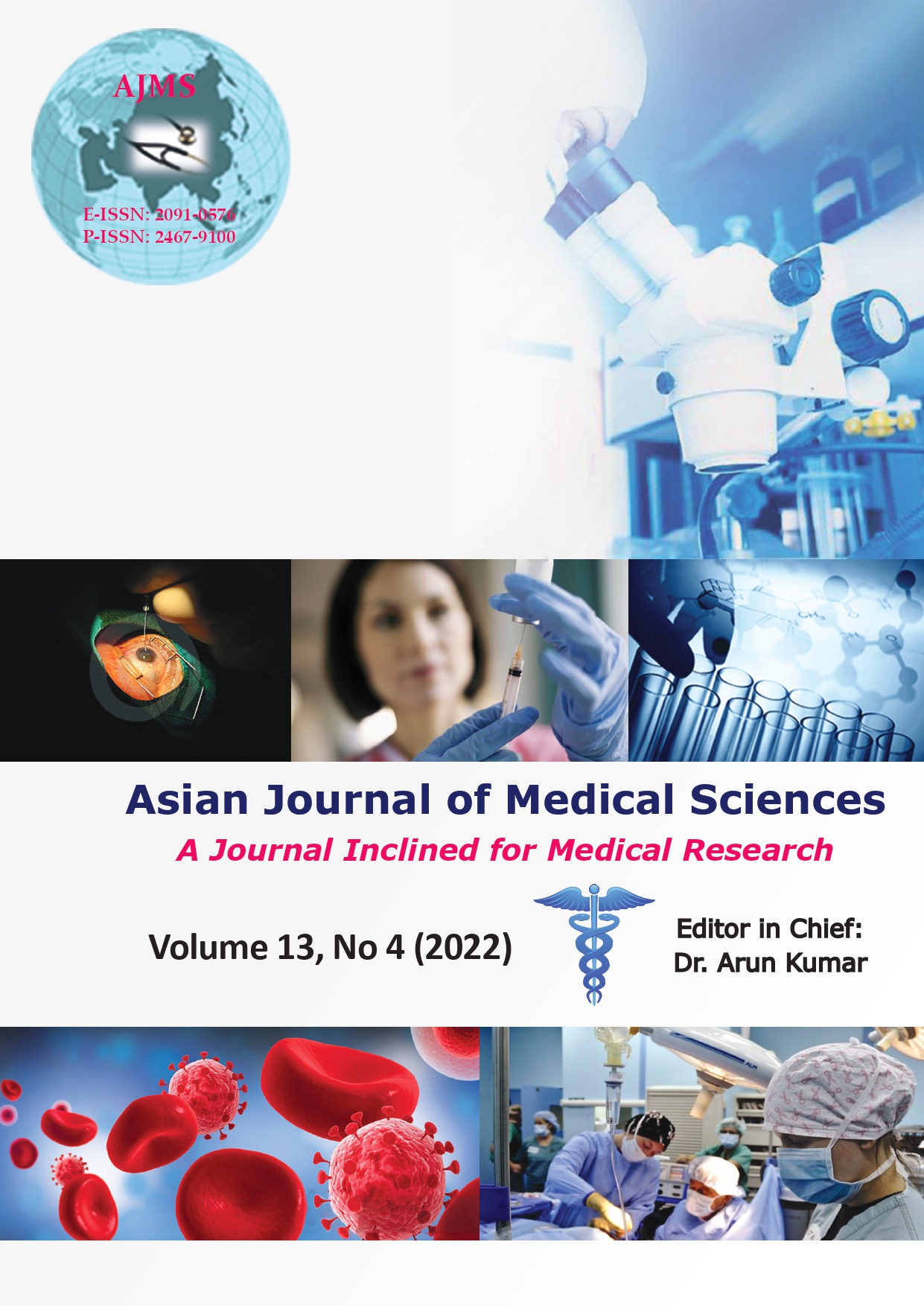Validation of rapid SARS-COV-2 antigen detection test as a screening tool for detection of Covid-19 infection at district hospital in northern India
Keywords:
Rapid antigen detection, RT-PCR, SARS-CoV-2Abstract
Background: Testing of samples from suspected SARS-CoV-2 patients with reverse transcription polymerase chain reaction (RT-PCR) may result in delayed detection of infection. Given the number of people affected in pandemic, it is important to use a test that gives faster results and can be used on large number of sample size to cope with the increased testing capacity. Rapid Antigen detection test fulfills both the criteria.
Aims and Objectives: The study aims to evaluate the diagnostic accuracy of rapid antigen detection test compared to RT-PCR on the same patients in District Hospital.
Materials and Methods: Subjects were tested by both Rapid antigen detection testing and RT-PCR in District Hospital. The present study compared RAT and RT-PCR for detection of SARS-CoV-2 in nasopharyngeal specimen.756 Nasopharyngeal samples were obtained from suspected cases of SARS-CoV-2, Contacts of CoV2 patients, pre-operative patients in District Hospital.
Results: Of 756 nasopharyngeal samples, 81 (10.71%) were positive and 675 (89.28%) were negative for SARS-CoV-2 by RT-PCR. The rapid SARS-CoV-2 antigen detection test’s sensitivity 55.04% and specificity was 99.2%, respectively. Positive predictive value 93.42%, Negative predictive value 91.47%, Diagnostic Accuracy 91.67%, Cohen’s Kappa Coefficient 0.6482, 95% CI: 0.5801–0.7163.
Conclusion: The rapid antigen detection test showed comparable sensitivity and specificity with RT-PCR assay. These results support the fact that RAT is an accurate alternative to RT-PCR in areas where there is increased testing burden, for screening of asymptomatic carriers, in areas that lack suitable laboratories to perform RT-PCR, in areas such as airport, train stations, and bus stands.
Downloads
Downloads
Published
How to Cite
Issue
Section
License
Copyright (c) 2022 Asian Journal of Medical Sciences

This work is licensed under a Creative Commons Attribution-NonCommercial 4.0 International License.
Authors who publish with this journal agree to the following terms:
- The journal holds copyright and publishes the work under a Creative Commons CC-BY-NC license that permits use, distribution and reprduction in any medium, provided the original work is properly cited and is not used for commercial purposes. The journal should be recognised as the original publisher of this work.
- Authors are able to enter into separate, additional contractual arrangements for the non-exclusive distribution of the journal's published version of the work (e.g., post it to an institutional repository or publish it in a book), with an acknowledgement of its initial publication in this journal.
- Authors are permitted and encouraged to post their work online (e.g., in institutional repositories or on their website) prior to and during the submission process, as it can lead to productive exchanges, as well as earlier and greater citation of published work (See The Effect of Open Access).




